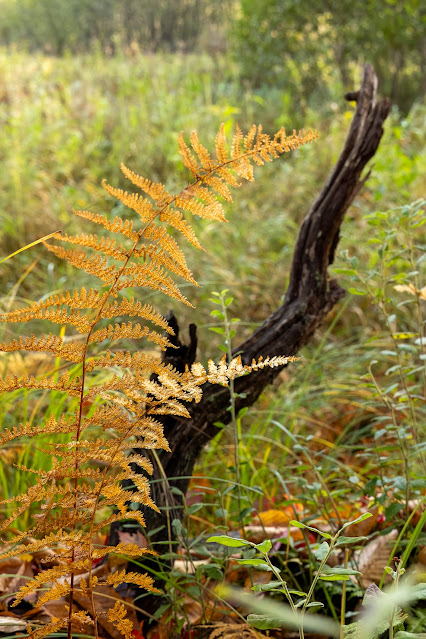In the last post, my story was about how to create fall photography in a less than optimum autumn. Since that post, there has not been a magical turnaround in our landscape. However, on return from 3-1/2 days in the higher elevations at Blackwater River in northeastern West Virginia, the results were a confirmation of the last post. Here goes the picks of the trip.
From the rim of the Blackwater River Canyon in the state park, this twisted tree captured my attention. After many slight shifts in position, a layered image was discovered. Notice that none of the three vertical tree elements on the left side touch.
The first version of this was captured with my iPhone 13 Pro. I returned the next day when the light's direction was better. If you first see a nice image, make it then. There is no guarantee about the situation a day later.
On another day I was at Dolly Sods. It is a high-elevation rocky wilderness area hosting sphagnum moss, heath shrubs and stunted red cedar normally seen in Canada. There were rich colors.

Color was to be found also at lower elevations. Once out of the canyon, the Blackwater takes a winding course with beaver ponds and less exotic flora. In October, asters, such as this one, are a reliable source of rich color.
The valley had large clusters of ferns. These violet asters were complemented by the orange and yellow ferns.
Here's a good example of my earlier suggestion to photograph now, rather than procrastinating for a better day. After making this image, a local gentleman shared that the barn is scheduled to be demolished in a few weeks. It won't matter how brilliant the fall is next year for this barn.
There are large bogs of huckleberries in Dolly Sods. I was drawn to this setting by the lonely white stalk of a dead weed standing among all of the reddish leaves in the bog. The distant mountain ridge suggests the extent of the field.
Many people are discouraged by a rainy morning, but the softness of the light and the moisture on the land can produce lovely results. The last morning dawned foggy with a few sprinkles. Several photographers passed this single dying fern without seeing the echo of its arch in the broken tree branch on the ground. That's no criticism, but rather a simple example of the variety in what each person finds interesting. This is what my eyes first attached upon. Do you find it beautiful?
I've always had a "thing" about decaying tree stumps. Its only ones from natural collapses, never ones from chain saws. The way falling leaves decorate the stumps in autumn attracts me. Consider this one.
Oh, the fog had lifted and some delicious warm light bathed the setting.
I have been holding back with my two favorite images. I love the creamy look of slow exposures on waterfalls. If by chance, there is a recirculating eddy to include in the foreground, I will take some small personal risks to explore the possibilities. The path there was sort of goat path. This is the Upper Elakala Falls in the Blackwater State Park.
I did a lot of small shifts to place the flat rock in the lower left corner. Little details matter.
A second love for me is when form, colors and separation from the background just fall into place. This one did. Notice how the yellow-green fern is echoed by a brown fern in the back.
There are nine images here. Only two large landscapes. The rest are intimate. It seems the season may be best captured with a balance from wide to close. If you look at the professional film and video, you will see how the framing is rarely repeated with each 10 second clip.
Paul



.jpg)













.jpg)




